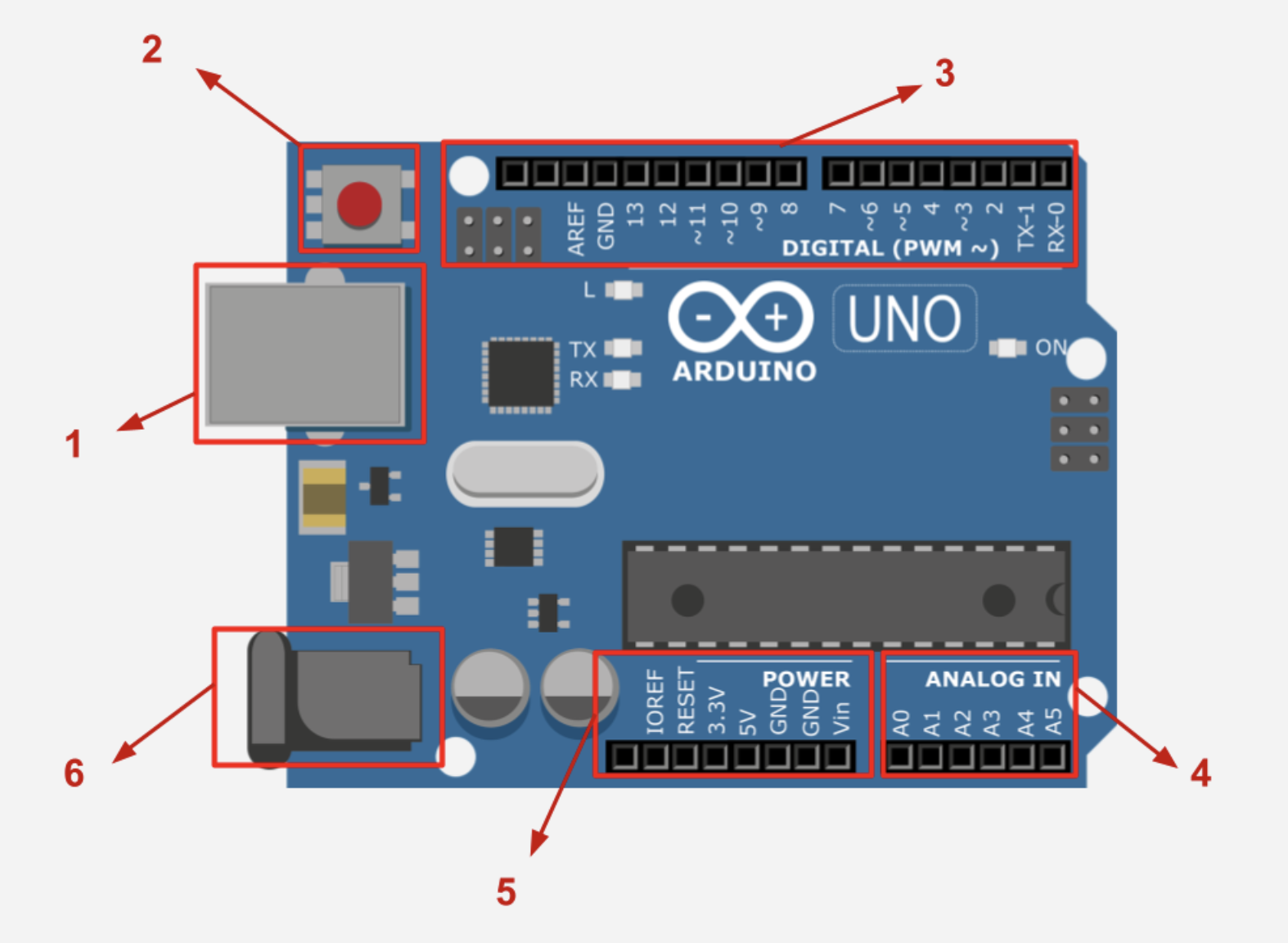What is the Arduino?
Arduino is an open-source electronics company who have developed mutliple microcontrollers that allow users to create projects by connecting various sensors, actuators, and other input/output devices and programming them with the C++ programming language. The Arduino Uno is a development board that utilizes the ATmega328P microcontroller from the Atmel AVR family.
A computer is a general purpose device that performs multiple functions whilst a microcontroller is designed to run one program at a time.
Structure of the microcontroller
If you purchased an Arduino kit as advised in the Introduction, grab your Arduino Uno R3 and let's understand the structure of your microcontroller.

- USB connector
- A port used to power your Arduino and/or upload code.
- Reset button
- Used to restart the microcontroller.
- Digital pins
- 14 digital input/output pins which can be configured to a HIGH (5V) or a LOW (0V) state.
- Pins marked with ~ support Pulse Width Modulation (PWM) and can be used to dim LEDs, control motor speeds and more. Don’t worry about this for now.
- Analog pins
- Used for reading analog voltage levels.
- Power pins (provide methods to supply voltage to components)
- Vin is used for external power.
- 5V and 3.3V pins are used for regulated voltage outputs.
- GND pins are used to provide a return path for current (grounding).
- Power connector
- A barrel jack connector which can also be used to power your microcontroller.
Assignment
- Explore the official documentation for your Arduino Uno. We will visit the Arduino documentation regularly, so bookmarking this page is advised.
- The Uno is one of many microcontrollers made by the Arduino company. Go ahead and visit this website to meet the Arduino family.
Next Steps
This section includes links to help you dive deeper into the topics from this lesson. It's optional, so don't worry if you choose to skip it.